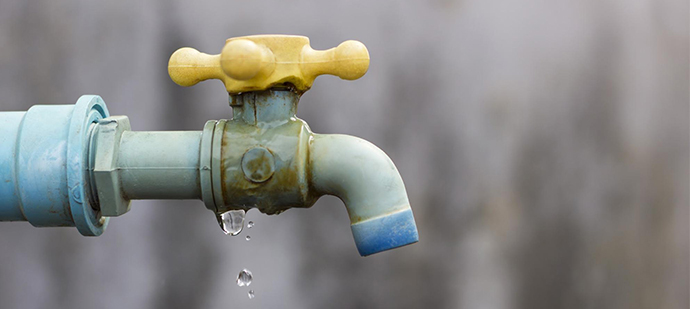Uncover Smart Ways to Detect Hidden Leaking Water Lines
Uncover Smart Ways to Detect Hidden Leaking Water Lines
Blog Article
The author is making several good pointers regarding Detecting hidden plumbing leaks overall in this content on the next paragraphs.

Early discovery of leaking water lines can reduce a potential catastrophe. Aside from conserving you money, it will certainly reduce the worry as well as frustration. The minute you discover a leakage, calling your plumber for repair work is the most effective service. Nonetheless, some tiny water leakages might not show up. Here are some hacks that help if you can not detect it with your nude eyes.
1. Examine the Water Meter
Every home has a water meter. Examining it is a proven manner in which helps you discover leaks. For starters, shut off all the water sources. Make sure no person will certainly purge, use the tap, shower, run the cleaning device or dishwasher. From there, go to the meter and watch if it will certainly transform. Given that nobody is using it, there should be no movements. That suggests a fast-moving leak if it moves. If you spot no changes, wait an hour or two and also inspect back once again. This indicates you might have a sluggish leak that can even be below ground.
2. Inspect Water Consumption
If you identify sudden adjustments, regardless of your usage being the same, it suggests that you have leaks in your plumbing system. A sudden spike in your bill indicates a fast-moving leak.
Meanwhile, a constant boost every month, despite having the same habits, shows you have a slow-moving leak that's additionally slowly rising. Call a plumber to completely check your residential or commercial property, specifically if you feel a cozy area on your flooring with piping below.
3. Do a Food Coloring Test
When it comes to water consumption, 30% comes from bathrooms. If the shade somehow infiltrates your dish throughout that time without flushing, there's a leak between the storage tank and also dish.
4. Asses Exterior Lines
Don't neglect to check your outside water lines as well. Examination faucets by attaching a garden pipe. Needs to water seep out of the link, you have a loosened rubber gasket. Change this and also ensure all connections are tight. It will help get it skillfully checked out and preserved yearly if you have actually obtained a lawn sprinkler system. One small leakage can lose lots of water and also spike your water bill.
5. Examine the circumstance as well as examine
Property owners ought to make it a practice to check under the sink counters and even inside closets for any type of bad odor or mold development. These 2 warnings suggest a leak so prompt attention is called for. Doing regular assessments, even bi-annually, can save you from a significant trouble.
Examine for stainings and compromising as most pipelines and home appliances have a life expectations. If you think dripping water lines in your plumbing system, don't wait for it to rise.
Early discovery of leaking water lines can alleviate a potential catastrophe. Some tiny water leaks may not be noticeable. Inspecting it is a surefire method that aids you discover leakages. One little leak can lose heaps of water and surge your water costs.
If you think dripping water lines in your plumbing system, do not wait for it to escalate.
How to Know If Your Home Has a Hidden Leak
Water Meter Reveals Inexplicable Water Usage
If you’d like to test whether or not there’s a leak somewhere in your home, you can do this using your water meter. Here is how to conduct the test:
Don’t use any water in your home for at least 30 minutes; this also means not turning on faucets or water-using appliances.
Go outside, and check your water meter for activity.
If your water meter shows that there was activity, even though no one was using any water, this proves that there is a leak in your home.Visible Mold or Mildew Growth
Leaks behind walls create moist, dark environments that allow mold and mildew to grow and thrive. Eventually, you might see mold growth forming on the wall closest to a hidden leak.
If mold is growing in an area that receives a high amount of moisture, such as a bathroom, it may simply be an indication that better ventilation is needed. However, if you see mold growth on a wall or the ceiling in an area where you would not expect, you probably have a hidden leak.
Musty, Mildew Odor
Sometimes you might not be able to see the mold or mildew that is growing as a result of a leak. However, the smell can give the problem away just as easily. If you catch a whiff of something musty, there’s a good chance that old water is collecting somewhere in your home that you can’t see.
Stained/Warped Walls, Ceilings, or Floors
When your home soaks up water, a variety of red flags can become visible, including ceiling stains, bubbling drywall, warped walls, and sagging floors. While these issues can be caused by excess humidity, they can also be signs that a pipe or plumbing connection has started leaking behind your walls.
Inexplicably High Water Bill
After a while, you get a general sense for what your water bill should be. If you own a pool or sprinkler system, your bill will tend to be higher during summer. However, if you receive a water bill that seems especially high, and you can’t figure out what caused it, then you may have a hidden leak somewhere that’s increasing your bill.
https://www.plumbingjoint.com/blog/2019/july/how-to-know-if-your-home-has-a-hidden-leak/

I was shown that editorial about Finding hidden leaks through a friend on another web page. For those who enjoyed our post kindly remember to pass it around. Thanks so much for your time spent reading it.
Burst pipe? Phone! Report this page